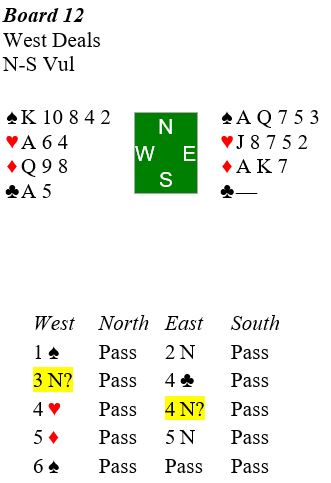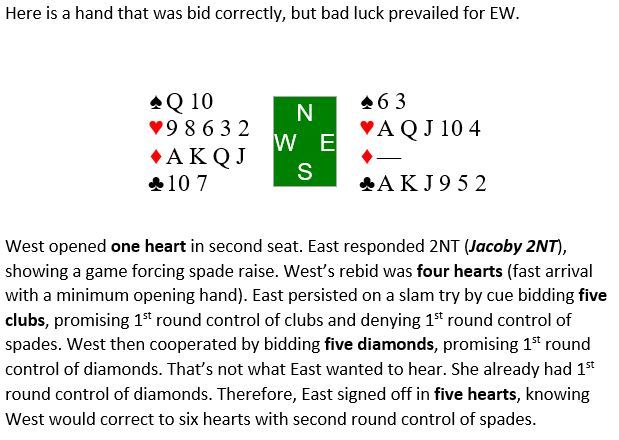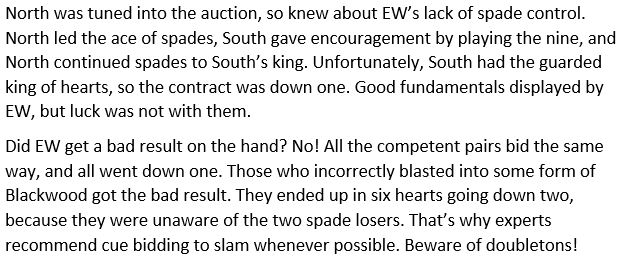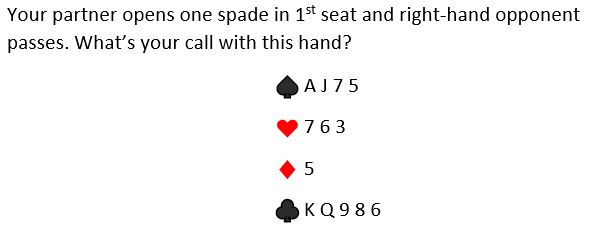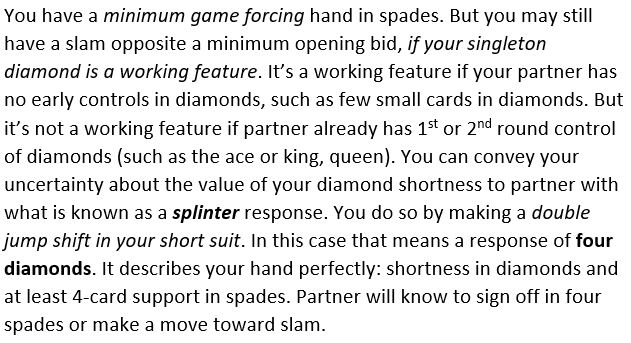There was lots of postmortem discussion on this hand the other day:
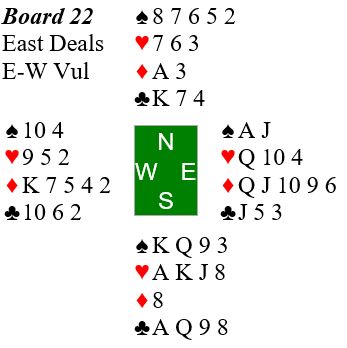
Nobody got to six spades, yet all were making six. How can you bid it? Answer is you cannot, and you should not. It only makes because of the lucky diamond features and location of heart queen. Moreover, spades are behaving nicely (West does not hold A J x of spades). Everything worked just right in this unlikely lie of the cards.
But say you gave North the diamond king rather than the king of clubs, so that the hand looked like this:
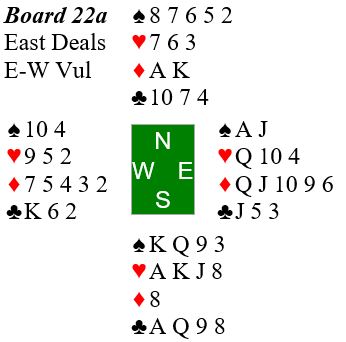
North’s hand is actually improved a bit with the marriage of top two diamonds. But there is no play for six spades in this layout. NS prospects are hampered by duplicative values in diamonds.
This revised hand (board 22a) illustrates the usefulness of splinter bids. South opens the bidding one club and North responds one spade (EW are silent). Now South splinters by jumping to four diamonds (one level higher than a jump shift)! The jarring nature of the jump by partner also jars the memory, so it’s easy to remember that you are playing splinters. The game-forcing splinter promises shortness in diamonds (singleton or void). North becomes aware of the duplicative values in diamonds and signs off in four spades.
Of course, you and partner must agree beforehand that you are playing splinters. Here is the relevant portion of the convention card:
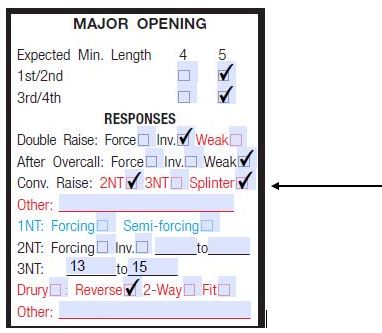
Notice that splinters (in red on the convention card) are alertable. You can often make a small slam with fewer that 33 points when partner knows that the shortness coveyed by the splinterer is a feature (e.g. not duplicative value).
